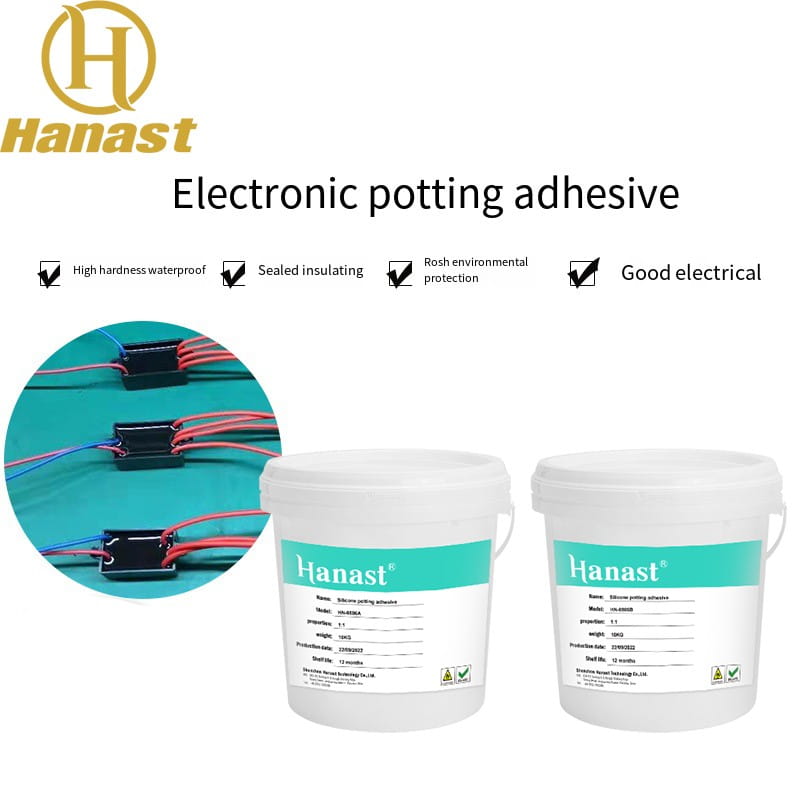Common phenomena and solutions of
 Apr 10,2023
Apr 10,2023

 Hanast
Hanast
Common phenomena and solutions of "poisoning" of addition type potting glue
During the actual use of the addition-type potting compound, the catalyst in the system is easily affected by certain substances to change the original structure, and the catalytic activity of the hydrosilylation reaction is reduced, which makes the curing barrier of the addition-type potting compound occur, that is, We often say "poisoning". The specific performance is that it is still liquid after curing, the surface is sticky after curing or the hardness is low after curing. Knowing the cause of the poisoning of addition type potting glue, what can be done to solve it?
What are the substances that affect "poisoning"?
Generally speaking, the amount of catalyst in the addition type potting compound is less than 0.1%, so a very small amount of impurities can make the catalyst invalid. Such substances mainly include:
• Ionic compounds of heavy metals such as lead, mercury, bismuth
• Organotin or silicone rubbers containing organotin catalysts (certain condensation-type silicones)
• Sulfur, polysulfide, polysulfone or other sulfur containing materials
• Amines, polyurethanes or other nitrogen-containing materials such as amine-cured epoxies (hot melts)
• Phosphorus, arsenic or other materials containing phosphorus or arsenic
• Plasticizers of unsaturated hydrocarbons (such as exudates from some PVC wires and insulating tape and insulating paper)
• Some flux residue (rosin, solder, etc.)
Common "poisoning" phenomena and solutions
1. The contact part of the circuit board solder joint is poorly cured
This is the most common curing obstacle phenomenon of the addition-type potting compound. It is specifically manifested as the non-curing or incomplete curing of the contact part between the potting compound and the solder joint of the circuit board, and it is still liquid after being placed for a long time. This situation is generally due to catalyst failure caused by residual rosin flux on the circuit board.
Solution: Use circuit board cleaning agent to clean the solder surface before pouring glue.
2. Poor curing of plastic surface contact parts:
This phenomenon is due to the catalyst failure caused by the release agent remaining on the plastic surface. It can be seen from the figure that there is a liquid on the inner wall of the plastic shell, and there are many scattered droplets on the outer surface of the cured colloid. (The porosity is due to the lack of vacuum when the test mix is poured)
Solution: Use ethanol or isopropanol to clean the plastic surface before refilling.
Addition potting compounds may come into contact with a variety of materials during application. If there is any doubt about whether certain surfaces or materials will inhibit curing, it is recommended to conduct a small-scale compatibility test first to determine its specific performance. suitability for application. If there is liquid or uncured product on the surface of the substrate and the interface between the cured silicone, it indicates that the compatibility is not good. At this time, it is necessary to find out the cause of the curing obstacle according to the specific phenomenon and careful experiments, and then eliminate it.




 Home
Home
 The type, function, selection and usage of potting glue
The type, function, selection and usage of potting glue  You May Also Like
You May Also Like







 Tel
Tel
 Email
Email
 Address
Address












